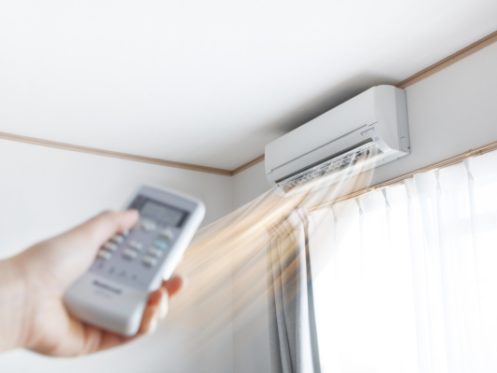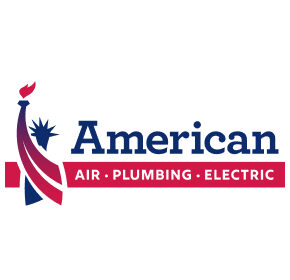Ductless systems have become more popular around central Florida due to their ease of installation and superior efficiency for both heating and cooling. When considering which system to install, you’re faced with the daunting task of understanding these systems and choosing whether you need a single or multi-zone setup. Use this guide to learn what ductless systems are and the difference between a single-zone and multi-zone approach.
Ducted vs. Ductless Systems
For decades, homes relied on ducted systems to heat and cool their air. These systems have a central heating and cooling system, usually with a single air handler and then either a furnace combined with an air conditioner or a central heat pump. The system draws air in through cold air return ducts, conditions it, and then returns it throughout your home using supply ducts and vents. It’s quite a remarkable system when it works properly and is effectively installed and maintained.
Ductless systems, on the other hand, have wall-mounted air handlers that don’t require transporting the conditioned air where it can lose or absorb heat, making them much more efficient. Further, they don’t rely on metal ducts that eventually corrode and need sealing and replacing. Rather, they use a heat pump for both heating and cooling, but they transport refrigerant rather than conditioned air.
Single-Zone Ductless Systems
Singe-zone systems have one air handler and one outdoor heat pump unit. These are not typically intended to heat and cool your entire home. However, they may work well for a single area of your home, such as an addition you put on after the primary HVAC system was installed. They may also work for small homes that only require a single unit to heat or cool the majority of the space.
Single-zone ductless systems are also used if you need special conditioning for a particular area of your home, such as an office, workshop, or workout room. They can help maintain the special temperature for that area without disrupting what you need for the rest of your home.
Multi-Zone Ductless Systems
A multi-zone ductless system has a single outdoor heat pump unit but multiple indoor air handling units. Each air handler runs when that area needs conditioning, meaning some may run more than others.
Each outdoor heat pump can handle up to eight interior air handlers. Each air handler is usually mounted to an exterior wall to make running the refrigerant lines easier. The lines will run outside your house and then enter through a hole in the wall directly behind the air handling unit.
Installation
Installation of a single ductless system is relatively easy. The indoor air handling unit is installed on an exterior wall. A hole is drilled through that wall to allow the refrigerant line to run through, usually using a 3-inch hole. You then have an outdoor heat pump unit that’s close to the area the indoor air handler was mounted to minimize the amount of refrigerant line you have to run. The only other thing you’d have to install is the power to the outside unit, which is usually hard-wired into your home’s electrical system. If you need more than one air handler in your home, you’ll need to install multiple single-zone systems.
Multi-zone systems still need to have adequate power installed for the outdoor air handler and will still need a hole in the exterior wall for the refrigerant line to run from the air handler. The difference is that you may have up to eight air handler units for a single exterior heat pump unit. Some multi-zone systems need a little more finesse if you’re trying to install an air handler on an interior wall. These require refrigerant lines to run through the interior walls, which is a more complex and expensive installation process.
Maintenance and Repair
The maintenance requirements between the two different systems are similar but are simply a matter of quantity. Both systems need routine professional maintenance twice a year. Both systems will require attending to the air filter and cleaning it regularly. They’ll also need repairs when various components wear out.
A single-zone ductless system potentially has more than one outdoor unit, each requiring maintenance. If you have more than one single-zone system, that also means you have a compressor, fan, coil, and all of the ancillary components that go with each outdoor unit. With only one single-zone system, your maintenance and repairs are simple and straightforward.
Maintenance on a multi-zone system is a little different, in some ways more complex while simpler in others. You’ll likely only have one outside unit, with only one compressor, coil, and fan. However, you’ll have the indoor units to match each of the zones you have, up to eight per compressor unit. All of this acts as a single system, so your technician will only have to do many of their checks once. However, you will have multiple air handlers that will need cleaning, testing, and tightening. You’ll also have multiple condensate drain lines that will need inspection and cleaning.
Energy Efficiency
Your system’s efficiency is a function of not only the rating of your unit but the total amount of energy it consumes. This is a key factor in determining whether to implement single-zone or multi-zone systems. One single-zone system will likely consume less power, so if that meets the need of your space, it will likely consume the least amount of energy.
However, if you need more than one zone, a multi-zone system will consume far less power than multiple single-zone systems. Even the larger compressor needed to run a multi-zone system will use less electricity than two or more single-zone systems, each with its own compressor. That makes multi-zone systems more efficient when you need to condition multiple areas of your home.
Which Is Better?
How do you choose which system is better for your home? Start by considering your specific need. Are you adding heating and cooling to a new addition to your home or because one area requires some additional conditioning to make it comfortable? In either of these cases, a single-zone system will be a good option, will be easy to install, and will cost the least to run.
However, if you need to condition more than one area, whether it’s your whole house or just some sections of it, a multi-zone system is preferable. Multi-zone systems are more expensive to install than one single-zone system, but you’ll love the long-term savings compared to installing and running multiple single-zone units. It’s the same principle that makes a central air conditioner less expensive than running multiple window units.
American Air, Plumbing, and Electrical has taken pride in serving the home comfort needs of the Oviedo community since 1987. Our award-winning team provides heating and air conditioning installation, maintenance, and repair together with indoor air quality solutions. Call to schedule your consultation with one of our trusted technicians to explore whether a single- or multi-zone ductless system may be the right option for controlling your home’s comfort needs.


